A sample text widget
Etiam pulvinar consectetur dolor sed malesuada. Ut convallis
euismod dolor nec pretium. Nunc ut tristique massa.
Nam sodales mi vitae dolor ullamcorper et vulputate enim accumsan.
Morbi orci magna, tincidunt vitae molestie nec, molestie at mi. Nulla nulla lorem,
suscipit in posuere in, interdum non magna.
|
Even before the landmark United States v. Microsoft Corp. antitrust case, competition law was a bit schizophrenic when it came to the question of interoperability. Monopolists have no general duty to make their products work with those of competitors, but what about the situation where a dominant firm deliberately re-designs products to render them incompatible with others? That is the provocative question raised by several pending antitrust lawsuits filed against Green Mountain Coffee, manufacturer of the Keurig line of single-serve coffee makers and coffee “pod” products.
TreeHouse Foods alleged in a complaint last winter that after its patent on “K-Cups” expired in 2012, Green Mountain:
abused its dominance in the brewer market by coercing business partners at every level of the K-Cup distribution system to enter into anticompetitive agreements intended to unlawfully maintain Green Mountain’s monopoly over the markets in which K-Cups are sold. Even in the face of these exclusionary agreements that have unreasonably restrained competition, some companies, such as TreeHouse, have fought hard to win market share away from Green Mountain on the merits by offering innovative, quality products at substantially lower prices. In response, Green Mountain has announced a new anticompetitive plan to maintain its monopoly by redesigning its brewers to lock out competitors’ products. Such lock-out technology cannot be justified based on any purported consumer benefit, and Green Mountain itself has admitted that the lock-out technology is not essential for the new brewers’ function.
In the consolidated multi-district litigation that ensued, Green Mountain is specifically charged with designing a so-called “Keurig 2.0” brewer which features technology that allows it to detect whether a coffee cartridge is one of Keurig’s K-Cups or is made by a third party that does not have a licensing agreement with the company. The machine will not brew unlicensed coffee pods.
The federal court overseeing the MDL cases denied the plaintiffs’ motion for an injunction on procedural grounds in September, issuing an opinion which reasoned that commercial success of the “2.0” brewers was uncertain and that coffee competitors would still have open access to some 26 million Keurig “1.0” machines for several years. In other words, the court did not reach the merits of the monopolization claim against Green Mountain.
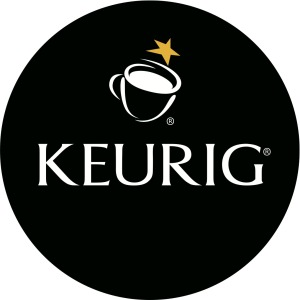
So where does that leave Keurig? As Ali Sternburg observed before revelations of its new 2.0 technology, Green Mountain’s prior 20 years of patent protection allowed the company to build a competitive advantage by “cultivating its brand (which likely involves trademark protection), honing its supply chain efficiencies, and generally maintaining its dominance due to having the first-mover advantage.” More than ten years before those patents first issued, moreover, the federal courts had ruled that new product introductions by monopoly firms — in one well-known instance, Kodak — would not be considered an antitrust violation because “a firm that pioneers new technology will often introduce the first of a new product type along with related, ancillary products that can only be utilized effectively with the newly developed technology.”
Continue reading K-Cups, Innovation and Interoperability
Nearly six months before this week’s reveal of iPhone 6 and the Apple Watch, the Wall Street Journal reported that Apple was in talks with Comcast Corp. about “teaming up for a streaming-television service that would use an Apple set-top box and get special treatment on Comcast’s cables to ensure it bypasses congestion on the Web.” For content, the product reportedly would not only offer users access to on-demand movies, TV programs and other apps, including games, but also live Comcast cable programming. This raises a serious question whether such an arrangement would represent a procompetitive development or instead further delay a languishing 20-year federal effort to create a commercially viable retail market for cable set-top boxes (“STBs”).
There are three sets of obstacles potentially standing in the way of this initiative. First are business issues associated with customer control. As commentary noted at the time:
Back in February it seemed both Comcast and DirecTV were reluctant to allow Apple to develop a system where customers logged in using their Apple credentials instead of their pay-TV accounts. The fundamental question of who gets to have the primary relationship with the customer has played prominently in Apple’s negotiations with magazine and newspaper publishers in the past, so it makes sense that the issue would pop up again in a different medium. Given that Comcast has been investing in its own advanced set-top boxes, the cable giant is probably not ready to cede too much ground too quickly.
The second set of issues relates to whether Apple, or any content provider, should be permitted to pay for routing of its IPTV traffic as a managed service, receiving priority handling for the packets involved, from ISPs. That is a subset of the network neutrality debate, commonly referred to as “paid prioritization,” that continues to rage before the FCC and Congress.
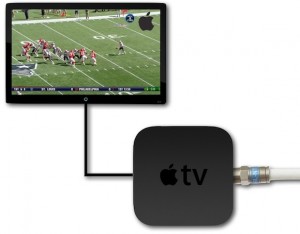 Yet a third set of issues has received scant attention in the business media. That is, how would an Apple STB deal with the 1996 legal mandate that so-called “navigation devices” be available for retail purchase by consumers, in other words unbundled from cable television and broadband service? Apple is known to have the most popular, addictive and tightly integrated ecosystem of all technology companies. The company is famous for steadfastly protecting this closed ecosystem and declining to make its hardware, or most software, interoperable with other platforms. The devices and software Apple sells are designed to work well with each other and sync easily so that preferences and media can be copied or shared with multiple devices without much effort. Applications work on many devices at the same time — even with a single purchase — and user interfaces are very similar across devices. Sure, out of necessity Apple offers iTunes software for Windows (supporting both the iTunes Store for music and video purchases and iPhone syncing on Windows PCs), but at their core most Apple products work best, if at all, only with other Apple products. Yet a third set of issues has received scant attention in the business media. That is, how would an Apple STB deal with the 1996 legal mandate that so-called “navigation devices” be available for retail purchase by consumers, in other words unbundled from cable television and broadband service? Apple is known to have the most popular, addictive and tightly integrated ecosystem of all technology companies. The company is famous for steadfastly protecting this closed ecosystem and declining to make its hardware, or most software, interoperable with other platforms. The devices and software Apple sells are designed to work well with each other and sync easily so that preferences and media can be copied or shared with multiple devices without much effort. Applications work on many devices at the same time — even with a single purchase — and user interfaces are very similar across devices. Sure, out of necessity Apple offers iTunes software for Windows (supporting both the iTunes Store for music and video purchases and iPhone syncing on Windows PCs), but at their core most Apple products work best, if at all, only with other Apple products.
As a business strategy, the closed Apple ecosystem experienced some very bad years in the mid-1990s, yet today has propelled Apple into its current status as the world’s most valuable corporation. As a legal and policy matter, though, things could be quite different.
Continue reading Apple’s Cable Set-Top Box and Interoperability
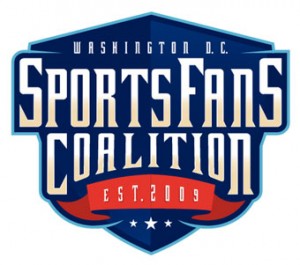
On behalf of the Sports Fans Coalition, I filed a brief yesterday with the FCC urging it to block the acquisition by Comcast Corp. of Time Warner Cable Inc. The gist of the argument is that the anticompetitive effects of vertical integration by cable systems have now reached crisis proportions with the ongoing refusal — already more than five months old and with no end in sight — of TWC to license Los Angeles Dodgers baseball games for cable or satellite distribution, or local broadcast, on any network other than its own SportsNet LA cable programming channel.
Hence this bold call for a remedy:
The Commission [should] hold the Applications in abeyance, declining to act all in this docket, unless and until TWC makes the SportsNet LA channel, and its exclusive Los Angeles Dodgers baseball content, available to all competing MVPDs at “fair market value and on non-discriminatory prices, terms and conditions,” and on the merits either (a) deny the Comcast-TWC request for transfer-of-control in its entirety, or (b) require the divestiture of all of Comcast’s RSN properties — sufficient for an independent competitor to operate the channels on profitable, going concern basis — as a condition to approving the acquisition of TWC.
Last month a Paris appeals court annulled some €3.9 million (US$5.2M) in fines imposed on endive producers and their trade associations by the French Competition Authority (the Autorité de la concurrence). Not dissuaded, that French competition agency just slapped a €1.6M (US$2.1M) fine on Caribbean yogurt maker Societe Nouvelle des Yaourts de Littee (SNYL) for falsely questioning the safety and quality of a rival brand in Martinique and Guadeloupe, characterizing the practice as “abuse of dominance” in the marketplace. 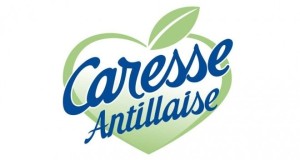
This epitomizes a fundamental disconnect between antitrust law and competition policy in the U.S. and that of many other nations. (No, the French are not alone…) American antitrust principles and decisions generally limit the reach of competition law — aside from competitor collision like price-fixing cartels — to business conduct that uses market power in an exclusionary manner. As the Supreme Court emphasized in 1993, “[e]ven an act of pure malice by one business competitor against another does not, without more, state a claim under the federal antitrust laws; those laws do not create a federal law of unfair competition or ‘purport to afford remedies for all torts committed by or against persons engaged in interstate commerce.'” In sharp contrast, the FCA reasoned about yogurt that “the dissemination of misleading and disparaging remarks by a dominant operator against one of its competitors is a serious practice with regard to competition rules.”
“Between December 2007 and December 2009, SNYL broadcast information discrediting the sanitary quality of Laiterie de Saint-Malo products using the questionable results of bacteriological tests and questioning the irregular consumption deadlines affixed to its products,” the FCA reported in a (translated) statement. This led a number of retailers to pull Malo products from shelves for an extended period. “This behavior had the effect of limiting product sales of Laiterie de Saint-Malo in Martinique and Guadeloupe — an abuse of dominant position prohibited by Article L 420-2 of the Commercial Code,” the FCA concluded.
In the United States, legal standards for proving antitrust claims are rightly rigorous; they are strict in order to reduce the risk that enforcement of the antitrust laws may chill the very sort of vigorous, competitive conduct they are intended to encourage. It’s been true forat least 35 years that the Sherman Act “is not a panacea for all evils that may infect business life.” Legendary antitrust law scholars Phillip Areeda and Herbert Hovenkamp have advocated a nearly insurmountable presumption against deception and fraud serving as the basis for a monopolization claim, a presumption most courts have readily embraced. As one court of appeals cogently explained, “[i]solated tortious activity alone does not constitute exclusionary conduct for purposes of a [Sherman Act] § 2 violation, absent a significant and more than a temporary effect on competition, and not merely on a competitor or customer…. Business torts will be violative of § 2 only in ‘rare gross cases.’”
The difference is that between competition and consumer protection, which are quite distinct concepts in American jurisprudence. If a firm uses a monopoly to harm competition without business justification, that’s an antitrust violation. If a firm lies about a competitor’s products or runs false advertising, that’s a deceptive business practice. The two legal regimes are directed at different constituencies and conduct, which is why the Federal Trade Commission Act was amended in the 1930s to add a separate provision (Section 5) for “unfair or deceptive” business practices, and why the FTC accordingly is separated into its two principal divisions: the Bureau of Competition and the Bureau of Consumer Protection. Likewise, the Lanham Act specifically prohibits false advertising and provides a damages remedy for injured companies. Thus, false representations around a firm’s own, or it’s competitor’s, products can be legally actionable, as the Supreme Court again ruled this year in a case about beverage labeling (Pom Wonderful v. Coca-Cola). They’re just not an antitrust violation in the United States.
Continue reading There Go the French Again On Competition
The French have a wonderful saying, la plus ça change, plus c’est la même chose, which roughly translates to “the more things change, the more they remain the same.” That’s an apt description of current, high-profile wrangling in the United States about music licensing under federal copyright law. Despite all the jarring changes to the recording industry over the past decade — remember Tower Records? — it’s the same issues and (mostly) the same players as always, arguing over a Rube Goldberg-like system of arcane complexity.
Today the House of Representatives (specifically the Judiciary Committee’s Subcommittee on Courts, Intellectual Property and the Internet) will hold a second round of hearings on music licensing. This inquiry coincides with a recent announcement by the Justice Department that it will review — and solicit public feedback on — the 73-year-old antitrust decrees that govern ASCAP and BMI, two groups which act as licensing clearinghouses for a range of outlets that use music, including radio stations, websites and even restaurants and doctors’ offices. As the New York Times has observed, “billions of dollars in royalties are at stake, and the lobbying fight that is very likely to unfold would pit Silicon Valley giants like Pandora and Google against music companies and songwriter groups.”

According to the consent decrees, which were instituted in 1941 after federal antitrust investigations, ASCAP and BMI cannot refuse licenses to music outlets that request them. These two “performance rights organizations” (PROs) have operated under this structure for decades, but in recent years have lost important legal cases having to do with licensing. Earlier in 2014, for instance, ASCAP lost a rate-setting case against Pandora in which several prominent music publishing executives were criticized harshly by the presiding federal judge. In response, major publishers like Sony and Universal Music Group have begun to openly discuss withdrawing from ASCAP and BMI, a move that would further complicate the licensing process.
Continue reading Music Licensing—La Plus Ça Change?
There’s a famous old political adage — “where you stand is where sit” (also known as Miles’ Law) — meaning basically that government policy positions are dictated more by agency imperative and institutional memory than objective consideration of the public interest. A related concept is “regulatory capture,” where administrative agencies over time become defenders of the status quo and pursue objectives more for regulated firms as their constituency than consumers. Capture theory is closely related to the “rent-seeking” and “political failure” theories developed by the public choice school of economics. Or as Harold Demsetz put it well in his influential 1968 article, Why Regulate Utilities?, “in utility industries, regulation has often been sought because of the inconvenience of competition.”
That’s no longer limited to electricity companies and other public utilities these days. With the advent of rapid, low-cost entry into previously sheltered markets, powered by technology and the sharing economy, today’s incumbent industries are taking regulatory capture and politics as rent seeking to new heights. At DisCo we’ve written extensively about Uber, Lyft, Airbnb, Tesla and many other disruptive new start-ups that are facing a backlash from established industries (taxis, hotels and auto dealers, respectively) which use consumer protection as a Trojan Horse to disguise preventing or delaying competition on price, features and service. Politicians in locales as diverse as New York, New Jersey, San Antonio and Seattle (believe it or not!) have, wittingly it seems, gone along so far.
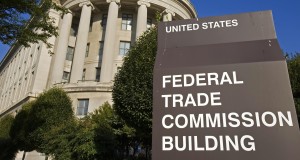
This is where what antitrust lawyers dub competition advocacy comes into play. Most antitrust policy in the U.S. is made in federal court as a result of merger, monopolization and horizontal collusion prosecutions launched by the Department of Justice (DOJ) and the Federal Trade Commission (FTC). But due to our federal-state system and a judge-made doctrine allowing states to exempt some markets from competition despite federal antitrust demands (government action, and private conduct to obtain such action, is challengeable in only relative narrow circumstances), much of the battle takes place in the legislative and regulatory arenas. Accordingly, competition advocacy is the primary tool available to antitrust enforcers in the U.S. to oppose state and local regulations favoring established firms over start-ups and parochially sheltering in-state companies from out-of-state competitors. The result is that for three decades the federal antitrust agencies have engaged in affirmative outreach to state and local legislators and regulators in the form of comments, letters and occasional lawsuits that seek to drive home the basic truths that competition outperforms regulation and the law should not pick winners and losers when it comes to evolving markets. (State attorneys general also undertake competition advocacy, principally through amicus briefs, as well.)
Continue reading Competition Advocacy Matters—Here’s Why and How
Recently the United States federal antitrust enforcement agencies — the Federal Trade Commission and the Justice Department’s Antitrust Division — issued a joint policy statement designed to “make it clear that they do not believe that antitrust is, or should be, a roadblock to legitimate cybersecurity information sharing.” The release made headlines globally, but the real story is that the risk of antitrust exposure for exchange of cyber risk information, even among direct competitors, was and remains almost non-existent.

That is because the U.S. antitrust laws (principally Section 1 of the Sherman Act) prohibit horizontal conspiracies and agreements among rivals, like price fixing, that harm competition. In some areas, information exchange can be competitively problematic, for instance where firms share non-public bidding or price data, or M&A transactions where the deal parties “gun jump” by acting as if they were already merged instead of continuing to compete independently. Yet as the policy statement confirmed, “cyber threat information typically is very technical in nature and very different from the sharing of competitively sensitive information such as current or future prices and output or business plans” and is thus “highly unlikely to lead to a reduction in competition.”
That’s hardly new. More than a decade ago DOJ said exactly the same thing in approving a proposal for cybersecurity information sharing in the electric industry, and Antitrust Division chief Bill Baer called the 2014 reaffirmation “an antitrust non-brainer.” But perceptions can have consequences, and some had voiced the fear that the exchange of IT security information among competitors could present a slippery slope, a forum for the kind of hard-core anticompetitive agreements the government loves to prosecute. At least that is what the White House, which called antitrust law “long a perceived barrier to effective cybersecurity,” reasoned in encouraging the FTC-DOJ clarification. So clearing away the underbrush of misinformation should help reassure business executives that companies which share technical cybersecurity information such as indicators, threat signatures and security practices, and avoid exchanging competitively sensitive information like business plans or prices, will simply not run afoul of the antitrust laws.
Continue reading Cybersecurity & Antitrust
The strangely named Rockstar Consortium has been in the news again, in part because some of its members just formed a new lobbying group, the Partnership for American Innovation, aimed at preventing the current political furor over patent trolls from bleeding into a general overhaul of the U.S. patent system. Yet Rockstar is perhaps the most aggressive patent troll out there today. Hence the mounting pressure in Washington, DC for the Justice Department’s Antitrust Division — which signed off on the initial formation of Rockstar two years ago — to open up a formal probe into the consortium’s patent assertion activities directed against rival tech firms, principally Google, Samsung and other Android device manufacturers.
Usually the fatal defect in antitrust claims of horizontal collusion is proving that competing firms acted in parallel fashion from mutual agreement rather than independent business judgment. In the case of Rockstar — a joint venture among nearly all smartphone platform providers except Google — that problem is not present because the entity itself exists only by agreement among its owner firms. The question for U.S. antitrust enforcers is thus the traditional substantive inquiry, under Section 1 of the Sherman Act, whether Rockstar’s conduct is unreasonably restrictive of competition.

Despite its cocky moniker, Rockstar is simply a corporate patent troll hatched by Google’s rivals, who collectively spent $4.5 billion ($2.5 billion from Apple alone) in 2012 to buy a trove of wireless-related patents out of bankruptcy from Nortel, the long-defunct Canadian telecom company. It is engaged in a zero-sum game of gotcha against the Android ecosystem. As Brian Kahin explained presciently on DisCo then, Rockstar is not about making money, it’s about raising costs for rivals — making strategic use of the patent system’s problems for competitive advantage. Creating or collaborating with trolls is a new game known as privateering, which allows big producing companies to do indirectly what they cannot do directly for fear of exposure to expensive counterclaims. Essentially, it’s patent trolling gone corporate. As another pro-patent lobbying group said at the time, Rockstar represents “a perfect example of a ‘patent troll’ — they bought the patents they did not invent and do not practice; and they bought it for litigation.” Predictiv’s Jonathan Low put it quite well in his The Lowdown blog:
The Rockstar consortium, perhaps more appropriately titled “crawled out from under a rock,” is using classic patent troll tactics since their own technologies and marketing strategies have fallen short in the face of the Android emergence as a global power. Those tactics are to buy patents in hopes of finding cause, however flimsy, to charge others for alleged violations of patents bought for this purpose. Rockstar calls this “privateering” in order to distance itself from the stench of patent trolling, but there are no discernible differences.
Continue reading Rockstar’s Patent Trolling Conspiracy
Google’s competitors “are locked in hand-to-hand combat with Google around the world and have the mistaken belief that criticizing us will influence the outcome in other jurisdictions.”
The coalition of companies that for years has unsuccessfully been pressing antitrust complaints against Google for search “abuse” — FairSearch.org — insists Google must be restrained for fear the Mountain View company will steer search users to its commercial products, like flight bookings. The group’s most recent publicity event, held at the ABA’s Antitrust Section annual spring meeting last week, repeated those same claims. FairSearch ventured as well into new ground, attacking what it terms Google’s unreasonably restrictive Android licensing practices.
There are four straightforward reasons FairSearch is wrong.
1. Predictions of Foreclosure Have Proven Totally Baseless.
When Google purchased travel software maker ITA in 2011, FairSearch maintained that Google would exploit its control over the ITA tools that power other online travel agencies, along with many of the airlines’ own sites, to usher competing search services off the stage, then jack up ad rates for travel queries and favor flights from particular airlines. 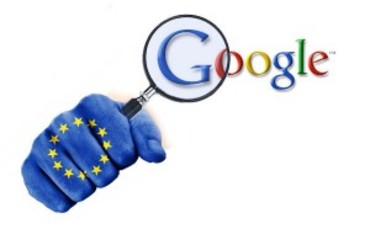 Three years later, nothing like that has happened. In fact, Google Flight Search is not among the top 100 or even the top 200 travel listing sites. Rather, it’s in 244th place, behind Hipmunk, with just .04% of travel queries. Real-world experience, in other words, reveals that the predicted competitive risks on which FairSearch bases its advocacy are both hypothetical and fanciful. Continue reading Four Reasons Fairsearch Is Wrong Three years later, nothing like that has happened. In fact, Google Flight Search is not among the top 100 or even the top 200 travel listing sites. Rather, it’s in 244th place, behind Hipmunk, with just .04% of travel queries. Real-world experience, in other words, reveals that the predicted competitive risks on which FairSearch bases its advocacy are both hypothetical and fanciful. Continue reading Four Reasons Fairsearch Is Wrong
Thirteen months after the U.S. Federal Trade Commission settled its antitrust investigation of Google Inc. by flatly declining to regulate the company’s search practices, the European Union is poised to do just that. This development highlights a serious rift between the two most influential competition authorities worldwide — and their very different value systems.
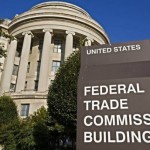
It has been true for years that on important Internet policy issues such as privacy, defamation, censorship and government surveillance, the 30-member EU has adopted principles far more intrusive for businesses, and likewise more protective of consumers, than in the U.S. Similarly, ever since a proposed General Electric-Honeywell merger was scuttled by the European Commission’s competition directorate in 2000, there have been a few highly visible cases in which the EU’s view of antitrust as a basis for protection of smaller entities in the marketplace has produced sharply different results.
So it is hardly surprising that EU Competition Commissioner Joaquin Almunia announced recently that several expanded concessions offered by Google to resolve his concerns about the fairness of the company’s search practices — which would fundamentally alter search by requiring Google to display links to rival search competitors on results pages served to its own search users — had finally borne fruit. The most basic competition issue asserted by the European authorities was that Google gives preference to its own services, like travel search, by placing those “specialised” (in European spelling) results above “organic” or natural search results. Google proposes to label these specialized results as paid placements and to add prominent links to rivals alongside. Despite vocal complaints by Google’s so-called vertical competitors that these substantial changes in search display — putting Expedia travel link results, for instance, on the same level of visibility as Google’s own sponsored links — still do not meet their needs, the fact that the EU is using its power to force serious search engine revisions on Google represents a watershed moment illustrating how far apart the two systems were and can still be at times.
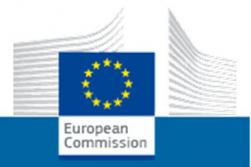
There are three principal ways in which the inconsistent U.S. and EU Google settlements epitomize this continuing war of the worlds over antitrust enforcement:
- Is Google a Bottleneck “Gateway”? Almunia’s investigation was overtly premised on the concept that Google’s 90 percent share of Web searches in Europe (compared to some 70 percent in the U.S.), equals monopoly power as a gateway essential to success for Internet businesses. American jurisprudence, in contrast, has largely abandoned the bottleneck classification and its corollary, the “essential facilities” doctrine. Moreover, U.S. competition enforcers and courts distinguish between consumer preferences (which are changeable) and a dominant’s firm’s economic power (which can persist for long only when sheltered by entry barriers) in a way that contradicts the EU premise. As one federal court explained in January, the “ability to act as a ‘gatekeeper’ distinguishes broadband providers from other participants in the Internet marketplace — including prominent and potentially powerful edge providers such as Google and Apple — who have no similar control over access to the Internet for their subscribers and for anyone wishing to reach those subscribers.”
- Is Consumer Deception an Antitrust Issue? The EU has been focused, in large part, on the fact that when redesigning its search result displays, Google may have confused Internet users by not specifically indicating that some results are now based not on generic search algorithms, but instead a decision to integrate links to Google’s own services on results pages. Almunia believes that the potential for misleading consumers justifies a competition remedy, saying that Google must “signal what are the relevant options, alternative options, in the way they present the results.” In contrast, American antitrust law is clear that fraud, deceptive advertising and other commercial bad acts alone are not of competitive concern. Consumer protection remains important in the U.S., but our legal principles separate regulation of consumer issues from the competition-preservation function of antitrust policy.
- Should Antitrust Protect Traffic to Google’s Competitors? By far the biggest difference in the EU approach to competition enforcement is the historical European preference for domestic firms in established industries. In France, for instance, Internet publishers pay a tax that subsidizes newspapers and printed mapmakers, something anathema to the American idea of a free market. Where Google is concerned, the question becomes whether, as an important source of Web traffic for competing specialized search services, its practices should be regulated in order to guarantee hits to rival sites. The EU has been somewhat schizophrenic, at first condemning what it termed “diversion of traffic” to Google itself and characterizing its mission as to “guarantee that search results have the highest possible quality,” then later stressing that its “aim is not to artificially send traffic to sites that compete with Google.” The bottom line, however, is that by seeking to stop Google from “diverting” Internet search users from the complaining sites, the EU is in part attempting to dictate the results of competition, something American antitrust leaves to the marketplace.
Yes, these differences can sometimes be overstated. Both the EU and American antitrust agencies mutually believe that competitive markets produce the best outcomes and that, absent abuse by firms with monopoly power, the government should not try to pick winners and losers. The contrasting values typically appear only in hard cases, where the facts are ambiguous or the competitive consequences difficult to predict. Different enforcement decisions in Europe and the U.S. are uncommon, but when they do occur, are important as more than isolated instances.
There is a ray of light in all of this, one conclusion on which both Almunia and Jon Leibowitz, the former FTC Chairman who closed the U.S. government’s investigation of Google last year, agree wholeheartedly. Neither the EU nor the FTC accepts the premise of complaining search competitors that antitrust law embraces a concept they term “search neutrality,” namely that search providers must treat all queries and results under the same objective standard. The FTC said it had neither the desire nor institutional expertise to “regulate the intricacies of Google’s search engine algorithm.” The EU likewise concluded that its Google remedies should address “the way they present their own services” rather than “discussing the algorithm” used for Internet search.
This is one way, unlike the Martian invaders in the H.G. Wells novel, that the shared histories of America and Europe give the developed world a sustainable advantage in economic performance. On both the continent and in the New World, new business ideas succeed if they are better designed to meet the needs of consumers. With rare exceptions, we do not intervene in the marketplace to achieve government-desired competition results or to exclude some firms for political or social reasons. That is particularly key to the different Google search remedy approaches. Since everyone admits Google got to its present position by building a better search engine, the consequences of allowing competition policy to morph into an artificial tool of technology regulation by way of search neutrality are enforcement quicksand for the government, regardless of which “side of the pond” it sits.
|
|








 Three years later,
Three years later, 
